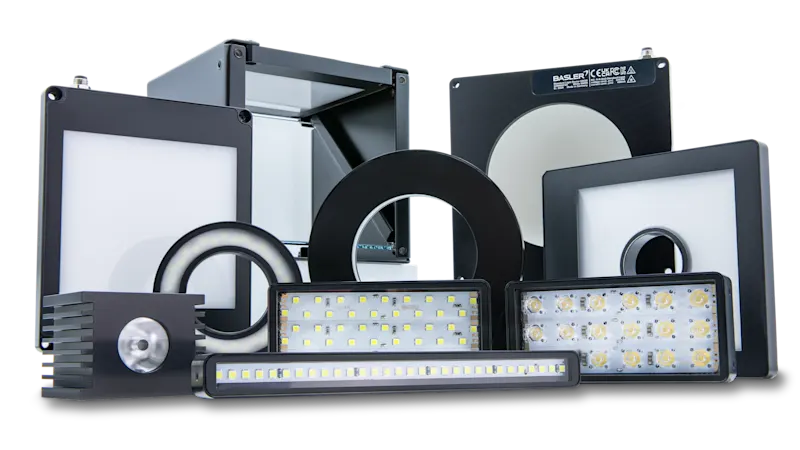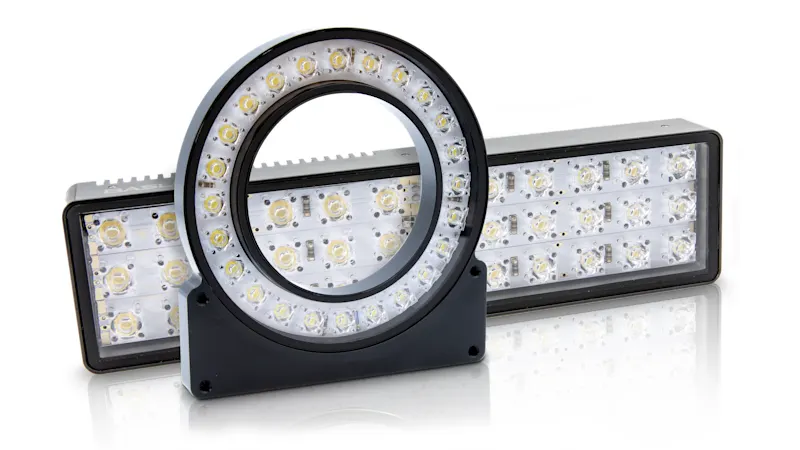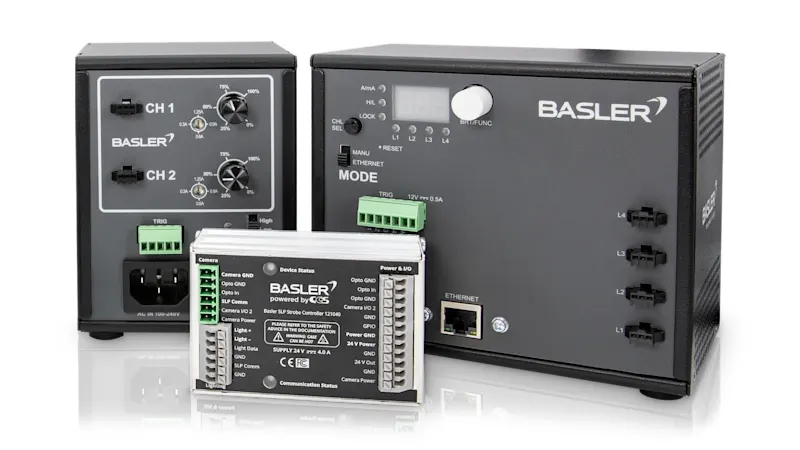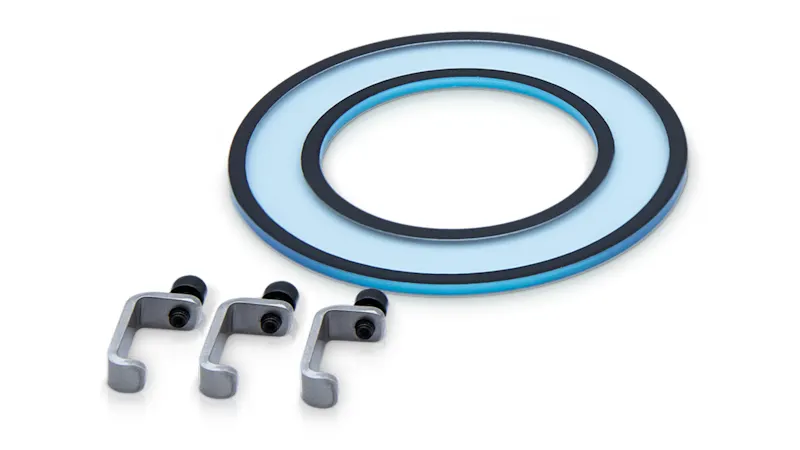Lighting in Image Processing
If I can't read the writing on a piece of paper, there's usually a simple solution: I hold the text under a lamp. If I want to see faint contours on the paper, I hold the sheet up against the light and they're more visible. In other words, the type and intensity of illumination make a difference.


The same holds true for image procession systems, where light is a major factor alongside camera, sensor, optics and software. External (additional) artificial lighting is required for applications when, as is frequently the case, the available natural light is insufficient or the composition of the light is wrong. Investing money in optimized lighting cuts both programming and image analysis costs. For this reason it's worthwhile to take your time and make a careful selection of lighting for your application. A well-selected lighting system impacts the quality of the image, and with it the effectiveness of the image processing system.
How Can I Find the Right Lighting for My Application?
While there are many different illumination types and techniques, don't worry: 80% of the applications work well with one of these three solutions:
The clear trend on the lighting engineering market is towards LEDs. They are cheaper and more efficient than alternatives such as halogen and fluorescent lighting.
The process for selecting the right lighting for your system is easy. First you must determine which object features need to be visible. The characteristics of the object to be evaluated are important. What kind of material is it made of? Does it reflect or absorb the light? What kind of structure, geometry and color are involved? The motion of the object, ambient light conditions and distance to object also impact the choice of lighting. Once those factors have been identified, it becomes relatively easy to choose a lighting type or at least form a short list of options.
Sample Applications
The angle from which the objects are illuminated matters as well. Here are a few examples to show why:
If I want to use a vision system to identify scratches, then it's recommended to use light from the side. The scratch then reflects the incoming rays of light in the direction of the camera, making it appear bright.
If by contrast I don't want to see the scratches, but rather want them hidden, then I illuminate the object from various angles, such as from above using a ring light, thus preventing shadows from forming and allowing other characteristics such as color and printed elements to be seen without interference.
Red Candies under a Red Light and Detecting Pressure Spots — The Role of Color in Lighting

If realistic color reproduction is required, then white illumination must be used in combination with the color camera. If characteristics regarding the color can be detected (such as red spots on the object), then in many but not all cases color reproduction is required. These characteristics frequently also appear on the b&w images of a monochrome camera through the use of colored illumination. Imagine an inspection task requiring red candies to be separated from blue ones. The trick is to use a red light. The red candies reflect the red light completely and thus appear to be very light, while the blue ones primarily absorb the light and appear as dark. The light source is thus a decisive component of a vision system.
Monochrome light sources frequently deliver clearer depictions, since lens-related chromatic effects cannot arise.
Another option is to use flash LED lighting. This variant should only be used where it will not bother human workers. The benefit of the flash technique is that it produces less heat, meaning the illumination modules can be brighter and work longer. A controller is often needed for optimal flash lighting, although many are already integrated into good flash lighting systems and are easier to configure.
One benefit for light at a specific wavelength is that it can be used to bring out properties to the forefront that are otherwise invisible. This is especially effective for example at detecting pressuring spots on fruit using infrared (IR) light. Infrared light is not visible to the human eye.

Where Can I Buy the Right Lighting System?
Many customers opt to build their own lighting systems for their applications. This is allegedly the cheapest and best suited solution for the task. Yet, it is often forgotten that the in-house staff has to neglect his or her regular duties while busy working on the lighting components. It can be enlightening to consider the revenue lost in this fashion compared with the imagined savings. In our experience, self-installation is only worthwhile for a highly specialized solution and custom application, and when the in-house staff has real know-how in this field.
Summary
Proper lighting is one of the essential elements of any successful image processing system for inspection tasks. A well-selected lighting system has a decisive impact on the quality of the image, and with it the effectiveness of the system. In simple terms, lighting helps determine whether an inspection task is handled efficiently or not. It's not difficult to find the right lighting for your vision system. 80% of applications work well with LED ring, bar or backlights. In many cases the user can easily modify or optimize the lighting to boost an image's brightness.
Our lighting products
Take advantage of our broad portfolio and choose the right product for your vision system. Our Illumination Advisor provides personalized product recommendations, guiding you step by step to the ideal selection of lighting and complementary components.





